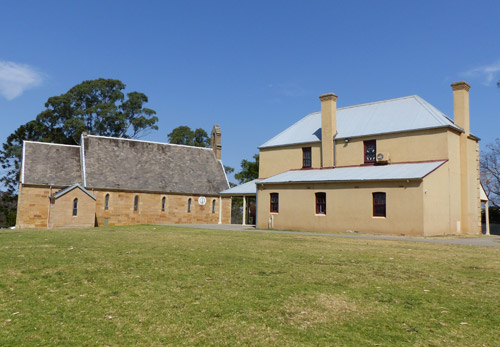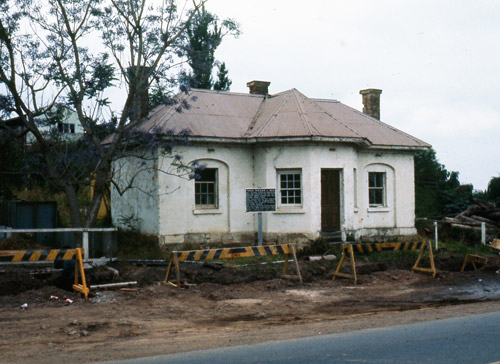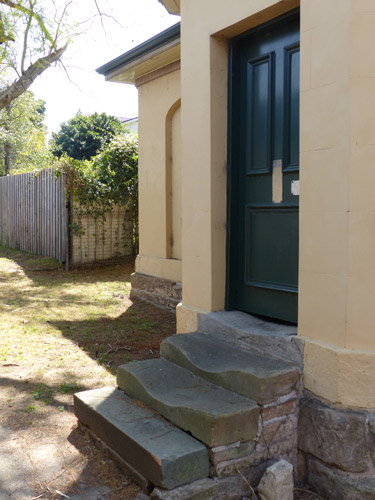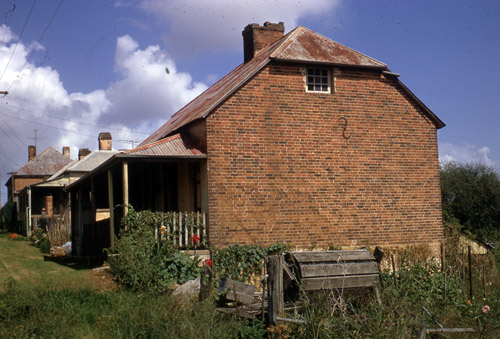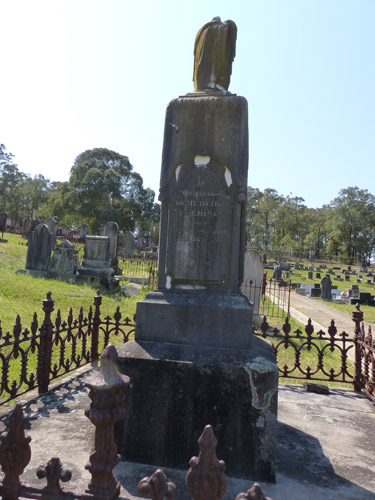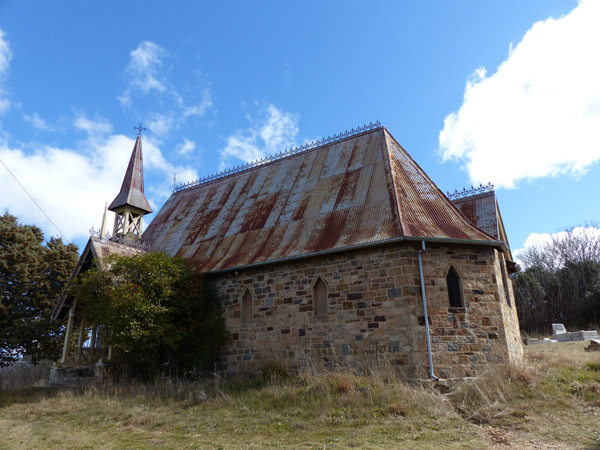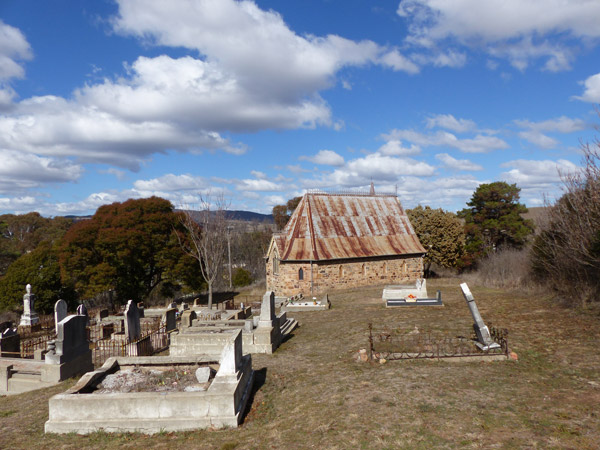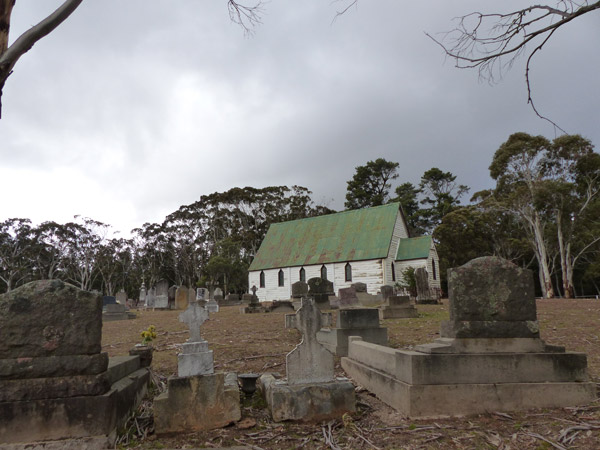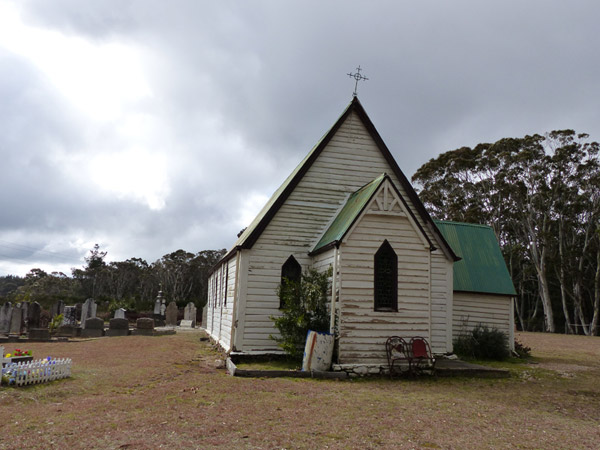Memorials serve to commemorate, by reminding or making us aware, of something significant that happened in the past. When it is appropriate and practicable, memorials are positioned in conspicuous places to capture public attention. When a memorial has been erected in a more remote location, clear directions to it, and information about its significance, would seem essential. Unfortunately for a memorial that stands on the banks of the Hawkesbury River, at Lower Portland in New South Wales, such is not the case.
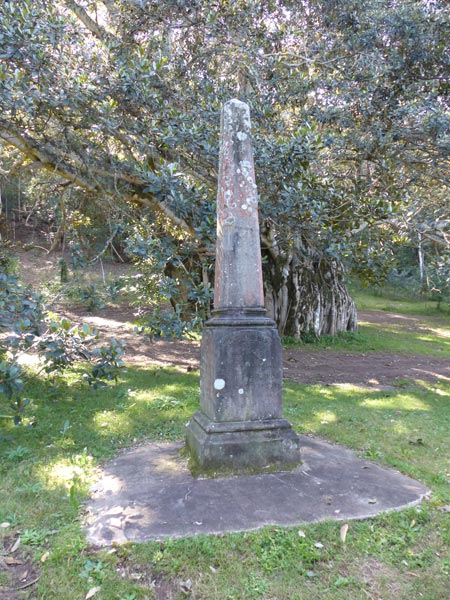
Erected in 1952, the year of Queen Elizabeth II’s succession to the English throne, this memorial takes the form of a sandstone obelisk. It has been there for close to seventy years. The beautiful, weather coloured stone is testament to this. The inscription on one face of the obelisk states: ‘This obelisk was erected as a memorial to the aborigines of the Hawkesbury, for whom this area was originally reserved’.
In 1889 the Minister for Lands set aside, or reserved, two areas of land along the Hawkesbury River for indigenous people. The larger of these reserves was on Cumberland Reach and the smaller was on Kent Reach. Together they form one of the numerous river bends. At this time, many indigenous people were still living in the vicinity of Sackville Reach. This explains why these new reserves were collectively named The Sackville Reach Aborigines Reserve. A Christian mission was later established there in August 1901 by the New South Wales Aborigines’ Mission. The Reserve remained for almost sixty years, closing in 1946 due to declining numbers. The area then came under the control of the local shire council.
On 5 July1952, the memorial obelisk was unveiled and dedicated near the site of the old Reserve. Its location had added significance, being not far from where the late Andrew Barber had lived. Mr Barber was described by the Windsor and Richmond Gazette,18 June 1952, as ‘the last of the aborigines of this district’.
The ceremony took place on the one hundred and sixty third anniversary of the day when an exploration party, lead by Governor Arthur Phillip, rowed past there in 1789. Phillip’s party, comprising about forty men, would have required at least three boats. In his journal, Captain John Hunter, a significant member of the group, did not actually state the number of boats used.
In his essay ‘Phillip’s Exploration of the Hawkesbury River’, Alan Dash refers to Jacob Nagle’s memoir. Nagle was an American sailor and crew member of the Sirius. Nagle’s recollection was that two, six-oared cutters accompanied a sixteen-oared vessel, describing the latter as ‘a boat that was built’. Dash concludes from this that the vessel was the Rosehill Packet, the first colonial built boat. But the Rosehill Packet was not launched until later in the year. Also, it would prove to be a difficult vessel to handle and if what Dash states is correct, I am surprised that Hunter did not mention it. Perhaps the larger vessel used was one of the disassembled boats that were brought out from England in cases. It is possible that since the Sirius was being repaired in Sydney at this time, the cutters used were from her complement of three.
The exploring party had spent the last four days rowing upstream from the mouth of the river at Broken Bay. This was Phillip’s third attempt to find and trace the river’s course.
Hunter commented in his journal that ‘we were all well armed, and capable of making a powerful resistance, in case, as we advanced up the river, we should find the interior parts of the country well inhabited, and the people hostile.’ It was still early days for the new arrivals. The strangeness and unfamiliarity of the country and its inhabitants obviously made the newcomers very wary and suspicious. In keeping with this caution, on this third expedition Phillip increased the number of marines by five. However, as they ventured along the river, they experienced no confronting or threatening behaviour from the few Aborigines they encountered.
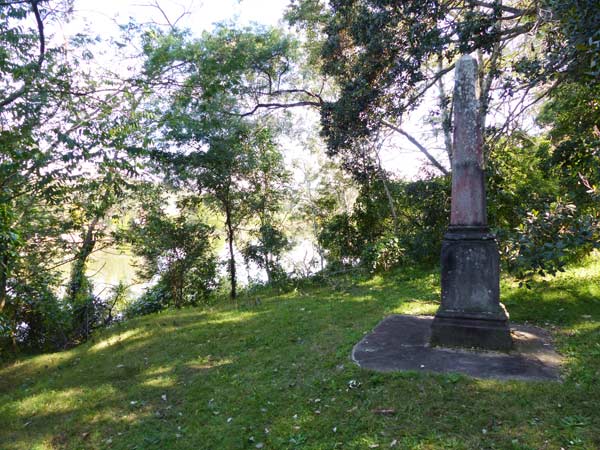
Before the memorial obelisk was unveiled and dedicated in 1952, the area around the site was cleared by the Colo Shire Council and a concrete base provided. The memorial could be seen clearly from the river. There was no acknowledgement included on the obelisk that the land had always been occupied by the indigenous people of the Hawkesbury. This was an unfortunate omission, especially when accompanied by the condescending notion of commemorating the reservation of an area for the original inhabitants to occupy.
However, without the memorial’s existence there would be little way of knowing the area’s significance in indigenous history. The memorial reminds us of this and hopefully has the potential to motivate inquiry and understanding about Aboriginal prior occupation and history in this area. It is significant that the organisers of the obelisk’s unveiling wanted it to occur as precisely as possible to the time and date when Phillip’s exploration party rowed past in 1789.
The obelisk was the idea of Mr P. W. Gledhill and he generously donated it. The stone was dressed and inscribed using funds from a public subscription.

Born in 1890, Percy Walter Gledhill was a most enthusiastic and dynamic local historian throughout his adult life. He was in the real estate business, having taken over his father’s Newtown agency and lived with his family at Fairlight, near Manly. A popular speaker, he gave many talks on local history subjects, illustrating them with lantern slides. He also wrote local history books and articles, including a variety of church histories.
A founding member of the Manly, Warringah and Pittwater Historical Society which began in 1924, he was president from 1940 until his death in 1962. He was an active member of the Royal Australian Historical Society and in 1952 was awarded a Fellowship of the Society. During his life, he was responsible for the creation of a significant number of memorials commemorating historical events, many of them relating to Governor Phillip.
In 1950 Gledhill had been associated with a memorial to specific Aboriginal grave sites in Camperdown Cemetery. This memorial has a far wider application, being seen as ‘a tribute to the whole of the Aboriginal Race’. Gledhill contributed the memorial’s concrete base.
It is only fitting that Gledhill’s achievements have also been commemorated in a number of ways. A lookout over Broken Bay and two waterfalls in Kuring-gai Chase National Park are named after him. He is remembered at Camperdown Cemetery by the Gledhill Gates. For many years he had been chairman of this cemetery’s Trust.
Back in those early post World War Two years, Gledhill’s memorial obelisk at Lower Portland created significant interest. This is evident from the sizeable crowd that attended the ceremony. A large component was made up of Royal Australian Historical Society members. All were prepared to travel to this remote part of Sydney on a very cold and windy afternoon.
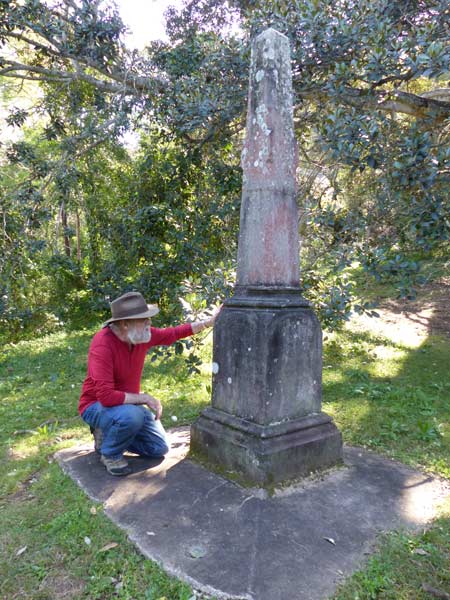
The obelisk was unveiled by the President of the Colo Shire Council, Mr H. C. Matheson, and the Anglican Dean of Sydney, the Rev Barton Babbage, performed the dedication. According to the Windsor and Richmond Gazette, 23 July 1952, the former international cricketer ‘Bert’ Oldfield ‘gave an absorbing and at times amusing address on feats of Aboriginal cricketers of the past’. John Anthill, the composer of the Corroboree ballet, and his wife were also in attendance. Their attendance was perhaps an acknowledgement of the importance of cricket and music in the life of the Reserve.
Despite the interest and enthusiasm shown in completing and dedicating the memorial in July 1952, weeds and bush plants began reclaiming the site and with it the obelisk. For a couple of decades the memorial was forgotten, until it was ‘found’ again during a council clean-up of the reserve.
On my initial visit to the obelisk I noticed, despite skilful repairs, that it had at some time been broken. Thanks to the efforts of Michelle Nichols at the Windsor Library, I learnt more about this damage. From the Council Records Department, Michelle discovered that in August 1981 ‘the top half of the obelisk was toppled, possibly by a 4WD vehicle. It was taken to Council depot for storage until further notice.’ In July 1985, vandals dislodged the top of the obelisk from its base. Later in August that same year, repairs involved repositioning the memorial’s top part by 25mm.
At the time of writing, there is little or no signage to the site. The access track is narrow and uninviting. I wonder if this is to avoid any threat of further vandalism. The obelisk is partially secreted by a large fig tree whose branches and leaves hang down protectively around it. A tangle of weeds restricts a view of the river. It follows that the obelisk cannot be seen from the river.
A visit to the memorial obelisk is definitely recommended. This is an unusual and unique memorial in a very secretive, bushland setting. The proximity to the Hawkesbury River presents a peaceful and attractive place for genuine reflection on the area’s history. Some strikingly large, lichen stained boulders tower in the bushland behind the obelisk. It is as if they are on sentry duty, there to protect this small, significant beacon of memory which stands upright below them.
© 2017 Jim Low (updated October 2018)
Note:
- Captain John Hunter’s An Historical Journal, Angus and Robinson, 1968, gives a first-hand account of Governor Phillip’s exploration of the Hawkesbury River.
- Besides the newspapers of the day, I have Jack Brook to thank for his valued, historical account of the Hawkesbury Aboriginal Reserve and Mission, Shut Out From The World, Deerubbin Press, 1999. It was there that I first read about the memorial.
- I would also like to acknowledge Tony Dixon’s comprehensive article on Gledhill.
( http://www.gledhillgenealogy.info/pwgstory.htm )
- Alan Dash’s essay ‘Phillip’s Exploration of the Hawkesbury River’ is in Hawkesbury River History, edited by J.Powell and L.Banks, Deerubbin Press, 2011.

